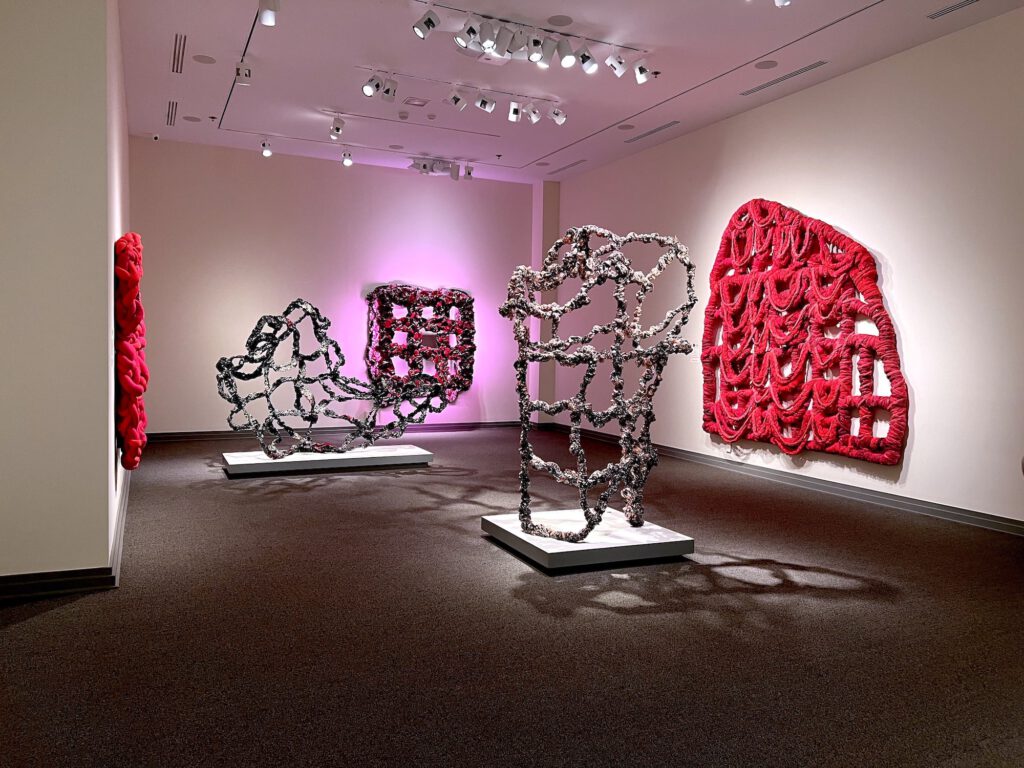Distillations: Vadis Turner at the Huntsville Museum of Art

Burnaway | January 18, 2023
By Bryn Evans
Above:
Encounters: Vadis Turner at Huntsville Museum of Art
On a Wednesday in November we gather ourselves in front of small screens. Nashville-based artist Vadis Turner and I are meeting to discuss Encounters, an exhibition of recent work at the Huntsville Museum of Art. We sit against white backgrounds—hers warm, mine cool—with the evidence of human life and recreation peeking out from our portraits’ fringes: a robin’s egg blue desk, a framed vintage daguerreotype, countless paperbacks arranged on a matte black shelf. Meeting for the first time, our portals form a two-paneled grid. The cameras produce windows that reflect mirror images of ourselves, and perhaps our environments exist as the residue of those deliberate testimonies, each allowing the other a peculiar glimpse into an otherwise interior world. Or at least a fragment of the truth we permit the window to bare.
The exhibition offers a fresh look at the artist’s research on the grid, a years-long engagement that Turner recently shifted to focus on the matrix’s “expressive possibilities.” In the gallery, viewers are able to feel the pulse of this departure, as networks of lines spill, weave, and aggregate in imaginative reticulations. The ongoing series, Window Treatments, alchemizes the grid into three-dimensional sculptures: figural variations with tortuous shadows that meld with, against, and through the window’s physical form. Somehow, Turner conceives works that are at once delicate and terrifying—towering sculptures glisten and morph like butterflies in chrysalis.
Window Figure: Circe embodies the character of its mythical namesake: enigmatic, enchanting, and enraged. The sculpture—composed of curtains, copper, gravel, resin, acrylic, steel, and a sound component by Grammy Award winning producer Emery Dobyns—resembles corroded arteries or intestines gilded by metallic flakes of lustrous and lustful affection. The window’s rope-like frame is made up of conduits that cluster and tangle in on themselves, fabricating a gnarly black and copper texture. As a free-form grid, Circe consists of large organic moments of negative space, yielding windows that reveal surrounding grid works in the gallery. The juxtapositions of dense materiality and open air, grid structure and natural form, attribute to the work’s inexplicable charm. Adding to the great number of pieces dedicated to the Greek enchantress, Turner deftly abstracts Circe’s mythology by elucidating her status as a tragic heroine for the misunderstood and contradicted. The work builds upon the artist’s earlier “textile paintings” which center the stories of female-identifying outcasts, such as the character Ophelia from the Shakespearean tragedy Hamlet, inspiration for Turner’s 2011 piece Primrose Path Engulfed in Smoke.